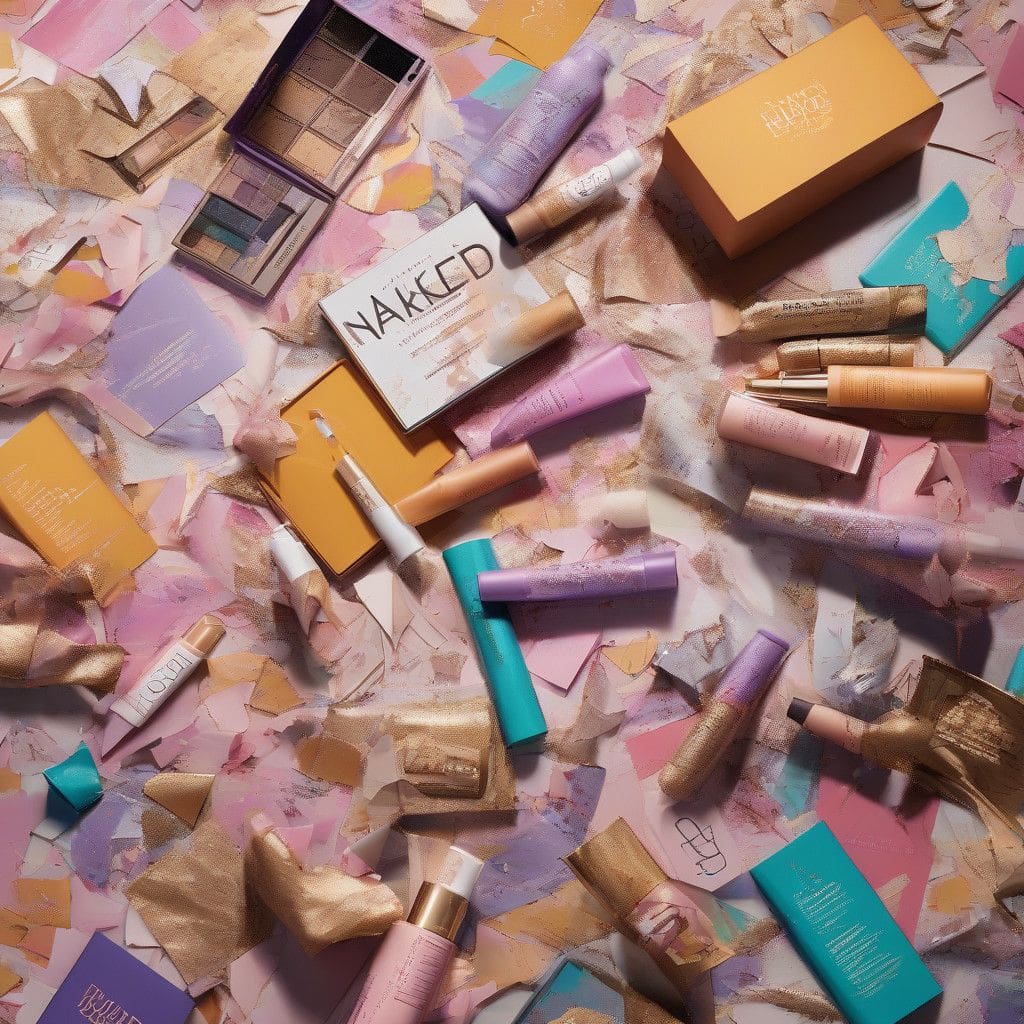Urban Decay is making waves once again with the limited edition relaunch of its iconic Naked eyeshadow palette. This product originally set the beauty world on fire when it first debuted, and its reappearance aims to capitalize on nostalgia while forging a path for the brand’s future.
The Naked eyeshadow palette, which features a mix of neutral and bold hues, was initially launched in 2010. It remained a staple in countless makeup collections and tutorials until its retirement in 2018. In that decade, it sold over 30 million units and generated over $1 billion in revenue. However, shifts in makeup trends, notably the rise of the “no-makeup makeup” movement, left the palette feeling dated.
In July, Urban Decay teased the return of the Naked palette, sparking excitement on social media. Influencers across platforms hyped the relaunch in early August, resulting in massive consumer engagement. Reddit threads buzzed with anticipation, with fans clamoring for the product to return. “If it’s Naked that would be everything,” one comment noted, signaling the solid community connection Urban Decay has cultivated with its audience over the years.
When the palette made its official comeback on August 4, the results were staggering. Urban Decay reportedly sold its expected five-month supply within just three weeks and more than doubled its overall basket size on e-commerce sales—up 25%—during the launch period. This successful launch highlights the power of nostalgia in the modern beauty industry, a tactic that many brands are beginning to explore.
Stéphanie Binette, Urban Decay’s general manager, emphasized that the goal was to engage the existing community while also re-attracting consumers who may have drifted away from the brand. “Some of them may have left the brand, and now they’re back,” she explained. This sentiment reflects a broader trend within the cosmetics industry, where legacy brands face intense competition from nimble, indie companies. Nostalgic products can successfully rekindle interest among both old and new customers.
However, maintaining long-term success post-relaunch remains a challenge. Urban Decay must now convert this moment into sustained momentum within a competitive market. Its parent company, L’Oréal, classifies Urban Decay within its Luxe division, which has historically lagged in growth but is showing signs of resurgence. The key for Urban Decay will be to not only maintain this buzz but also expand on it with timely, innovative product launches.
For established brands, the careful relaunch of hero products can evoke potent sentiments among consumers. Another example is Clinique’s lipstick, Black Honey, which began trending on TikTok in 2023 despite being a long-time staple. Similarly, Urban Decay hopes its reintroduction of the Naked palette resonates with both nostalgic die-hards and newcomers.
Executing a thoughtful relaunch is essential. When the Naked palette returned, it was accompanied by a cleverly crafted marketing strategy that amplified its allure. By collaborating with social media influencers and employing strategic partnerships, Urban Decay successfully reignited excitement for the product. Working with Ulta Beauty, known for its broad U.S. distribution, ensured the Naked palette reached a wide audience, both in urban and rural settings.
Modernizing the product while respecting its heritage played a crucial role in its appeal. While the palette’s shades and velvety case remained true to the original, the formulas were updated to be vegan and enhance blendability. Maria Salcedo, Ulta’s senior vice president of merchandising, noted that customer feedback emphasized the palette’s quality. “Some shoppers still felt it offered superior quality,” she said, cementing the importance of maintaining high standards in product reformulations.
The excitement surrounding the relaunch, however, isn’t entirely universal. Some loyal customers have expressed dissatisfaction with changes in product performance. Elizabeth Hamlin, a long-time user, voiced that the revamped version of the palette faded faster than its predecessor. This feedback serves as a reminder that customer expectations are high, especially for products with a strong legacy.
Urban Decay must now navigate the crucial transition from nostalgia to innovation. The company is reportedly working on a broader brand refresh while keeping an eye on trends that favor less bold colors and a more subdued aesthetic. Binette mentioned that there are still opportunities to explore in the realm of lips and eyeliners, aiming for a blend of classic and contemporary appeal.
The makeup landscape is cluttered with new entrants that focus on a fresh-faced aesthetic, which poses a significant challenge to brands like Urban Decay that have historically been associated with loud, vibrant palettes. Maintaining relevance means evolving with consumer preferences while remaining true to brand identity.
The fate of the Naked palette may hold lessons for the entire beauty industry. This relaunch isn’t just about reviving a product; it symbolizes a chance for Urban Decay to redefine itself within a competitive sphere and cement its place in the modern beauty narrative.
As the beauty landscape continuously shifts, the ability to reconnect with past customers while drawing in new fans is paramount for Urban Decay. The learned experiences from launching the Naked palette can serve to propel the brand into its next chapter, marking a resurgence for a once-iconic name in cosmetics.
Nostalgia may have powered the relaunch, but the future success of Urban Decay hinges on innovation, quality, and a firm understanding of market dynamics.











